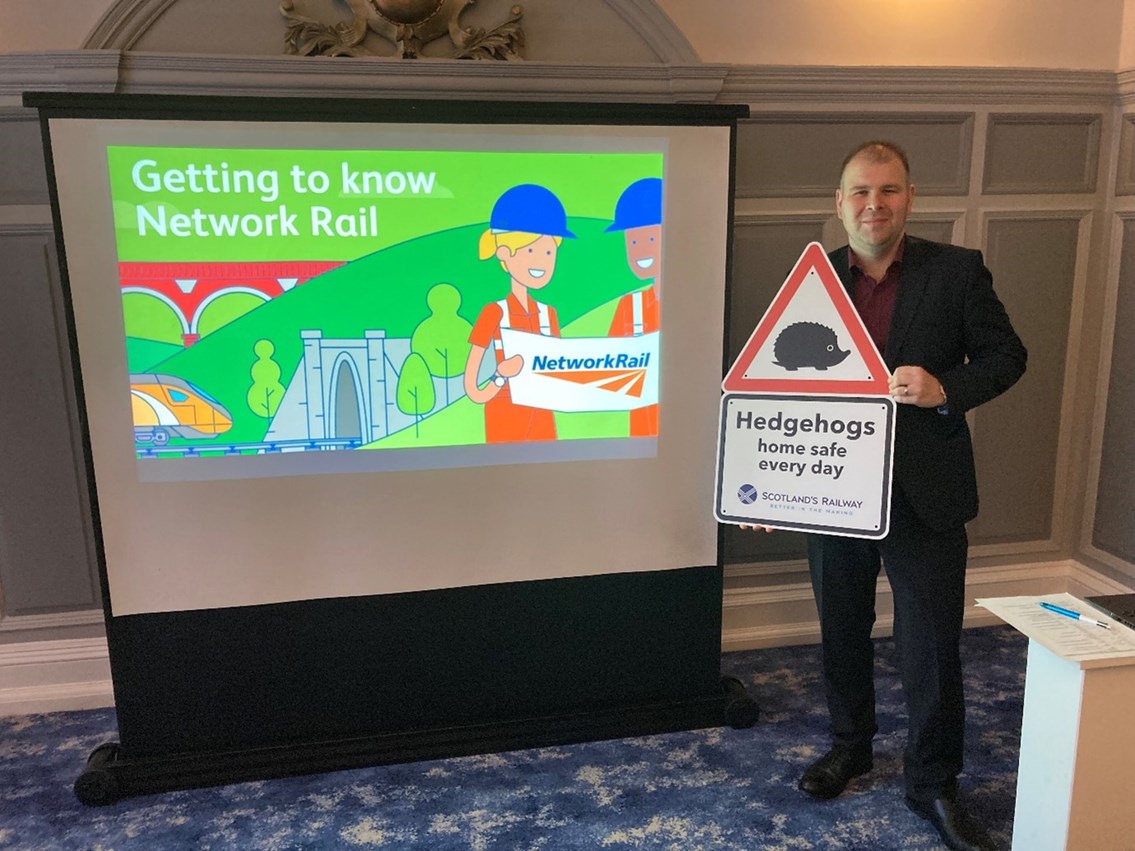Monday 27 Jun 2022
Network Rail shares insights into managing its lineside environment
- Region & Route:
- Scotland’s Railway: Scotland
Network Rail Scotland recently gave stakeholders the chance to learn first-hand how they safely manage vegetation around the railway.
Teams across the region/route offered insight into the organisation’s work at an event which included elected members, membership bodies representing landowners, utility companies, rail manufacturers, and council officers.
Participants were shown the what, why and how of our tree and vegetation management work and heard about the increasing threat posed to Scotland’s railway from ash dieback and how Network Rail is planning for this.
Presenters also covered information about ecology, habitat and wildlife and outlined some of the sustainability measures being implemented on trial projects across the rail network.
Following the success of the first of its kind event in Glasgow, it is anticipated that it will repeated at other locations across the country to enable more local partners and stakeholders to find out about how Network Rail is evolving its approach to managing its lineside assets.
Jonathan Callis senior asset manager for Network Rail said: “The railway touches almost every community in Scotland. We know that our work not only impacts the millions who travel by rail but also our lineside neighbours and adjacent landowners.
“This type of event is a unique opportunity to further develop and improve engagement with landowners and estates across the length and breadth of the country.
Councillor Mark McGeever who is Chair of South Lanarkshire Council’s Climate Change and Sustainability Committee said: “Protecting our environment is now a crucial issue for every organisation and It was great to hear how Network Rail is making a difference by considering the environmental impact of what it does.
“Their ways of working are very relevant to local authorities. There are obvious parallels between ensuring tracks are clear and that train drivers can see the signals, and councils ensuring roads are safe and that motorists can see signs.
“It’s clear that simple steps can have a positive effect – like where trees have to be felled, doing so in ways that creates habitats for local wildlife.
“While environmental responsibilities are often made to sound like a bit of a burden, the truth is they also offer huge opportunities to make things between for people who live and work here.
“That’s something we in local government need to understand and take advantage of, and I’m glad to see it’s a philosophy shared by Network Rail.”
Contact information
Passengers / community members
Network Rail national helpline
03457 11 41 41
Latest travel advice
Please visit National Rail Enquiries
Journalists
Network Rail press office - Owen Campbell
NR Press Office 0141 555 4108 / 07515 617073
Owen.Campbell1@networkrail.co.uk
About Network Rail
We own, operate and develop Britain's railway infrastructure; that's 20,000 miles of track, 30,000 bridges, tunnels and viaducts and the thousands of signals, level crossings and stations. We run 20 of the UK's largest stations while all the others, over 2,500, are run by the country's train operating companies.
Usually, there are almost five million journeys made in the UK and over 600 freight trains run on the network. People depend on Britain's railway for their daily commute, to visit friends and loved ones and to get them home safe every day. Our role is to deliver a safe and reliable railway, so we carefully manage and deliver thousands of projects every year that form part of the multi-billion pound Railway Upgrade Plan, to grow and expand the nation's railway network to respond to the tremendous growth and demand the railway has experienced - a doubling of passenger journeys over the past 20 years.
Follow us on Twitter: @networkrail
Visit our online newsroom: www.networkrailmediacentre.co.uk

